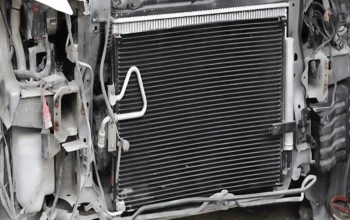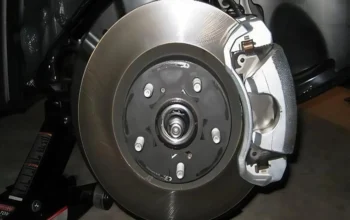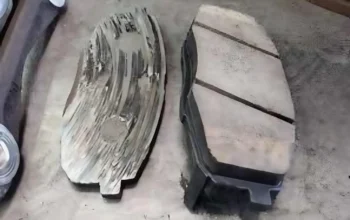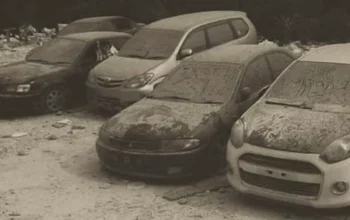If your car is struggling to start, or if you’ve spotted corrosion around your battery, it might be time to replace car battery cables and terminals. These components are essential for maintaining a solid electrical connection between the battery and the rest of your vehicle. Ignoring damaged car battery wires or corroded connectors can lead to poor performance—or worse, leave you stranded with a dead battery.
In this guide, we’ll walk you through how to replace car battery cables, clean your terminals, and check for signs of wear. Whether you’re dealing with battery clamps, loose wires, or green gunk on the posts, we’ve got a step-by-step plan to help you fix it yourself. Don’t worry—it’s easier than it sounds, even if you’re not super handy under the hood.
Table of Contents:
What Are Battery Terminals and Cables?
Battery terminals are the metal connectors on top of your car battery. They’re designed to transfer electricity from the alternator to the battery and from the battery to your car’s electrical system. These are usually made from conductive metals like copper or lead and are secured using bolts or nuts.
Battery cables, on the other hand, are thick copper wires that connect the terminals to various parts of the car. There are two types:
- Positive cable (red): Connects to the starter and electrical system.
- Negative cable (black): Also called the ground strap, connects to the chassis.

Signs You Need Battery Terminal Replacement
If you’re not sure whether it’s time for a battery terminal replacement, look out for these symptoms. Catching these early can save you from a roadside breakdown.
1. Trouble Starting Your Car
A slow crank or clicking noise when turning the key is a big red flag. Often, this is caused by poor contact at the terminals due to corrosion or looseness.
2. Visible Corrosion
If you see a white or blue powder around the battery posts, that’s corrosion. It interferes with electricity flow and should be cleaned or replaced immediately.
3. Electrical Failures
A loose connection or cable corrosion can cause the car to lose power completely. If your lights flicker or electronics act up, your battery terminals may be to blame.
How to Replace Car Battery Cables and Terminals
Let’s go through how to fix car battery cables and terminals step by step. Make sure your tools are ready before you start.
Tools You’ll Need
- Wrenches or socket set
- Wire cutters and strippers
- Wire brush
- Heat-shrink tubing
- Baking soda and water
- Gloves and safety glasses
- Pliers
1. Disconnect the Battery
Always start with the negative cable (black). This reduces the risk of sparking or short-circuiting. Once that’s off, remove the positive cable (red).
2. Remove Old Clamps and Terminals
Use cutters or a grinder to remove the old connectors. If they’re fused or severely corroded, take your time—don’t force them.
3. Clean the Battery Posts
Mix one tablespoon of baking soda with water. Dip a toothbrush or wire brush in the mix and scrub off any corrosion on the battery posts. Rinse with water and dry completely.
4. Strip the Battery Wires
Cut off the old ends of the battery cables. Strip back about half an inch of insulation to expose clean copper.
5. Clean the Wires
Look for green corrosion inside the wire. If you see any, clean it thoroughly or cut back further until clean copper appears.
6. Add Heat-Shrink Tubing
Before attaching the new clamps, slide some heat-shrink tubing onto the wire. This will help seal the connection once everything’s reconnected.
7. Install New Terminals
Crimp the new terminal clamps onto the wires. Then slide the shrink tubing over the joint and use a heat gun to seal it tightly.
8. Reconnect the Battery
Start by connecting the positive cable, then the negative. This order is important to prevent short circuits. Give the clamps a gentle tug to make sure they’re tight.
Which Cable Do You Connect First?
There’s a correct sequence when connecting or removing battery cables, and it matters for safety.
1. Disconnecting the Old Battery
- Remove negative (black) first
- Then positive (red)
This prevents accidental short circuits.
2. Connecting the New Battery
- Attach positive (red) first
- Then negative (black)
Make sure the clamps are tight and the terminals are clean.
Safety Tips When Replacing Battery Cables
Here are a few key precautions you should always take:
1. Turn Off the Car Completely
Remove the keys from the ignition and give the engine time to cool down before working.
2. Wear Safety Gear
Use gloves and goggles to protect yourself from acid or corrosion.
3. Work in a Ventilated Area
Battery gases are flammable. Don’t smoke or use open flames nearby.
Tips to Prevent Battery Terminal Corrosion
Corrosion shortens the life of your cables and can ruin your battery. These simple habits can help:
1. Apply Petroleum Jelly
Rub a small amount on each terminal to prevent oxidation.
2. Inspect Monthly
Lift the hood every few weeks to check for signs of wear or buildup.
3. Use a Cleaning Mix
A paste of baking soda and vinegar works wonders on corrosion. Clean with a rag or toothbrush.
When to Replace the Entire Battery
If your battery is old (3+ years), or you still experience issues after replacing the terminals and cables, it might be time for a full battery replacement. No amount of electrical troubleshooting will help a battery that’s reached the end of its life.
Final Thoughts
Learning how to replace car battery cables and terminals is a practical skill that can save you time, money, and frustration. The process is simple once you understand the steps, and it’s a smart way to ensure your car’s electrical system runs smoothly. Keep an eye out for signs of cable corrosion, and don’t hesitate to change the battery terminal clamps when they show wear.






